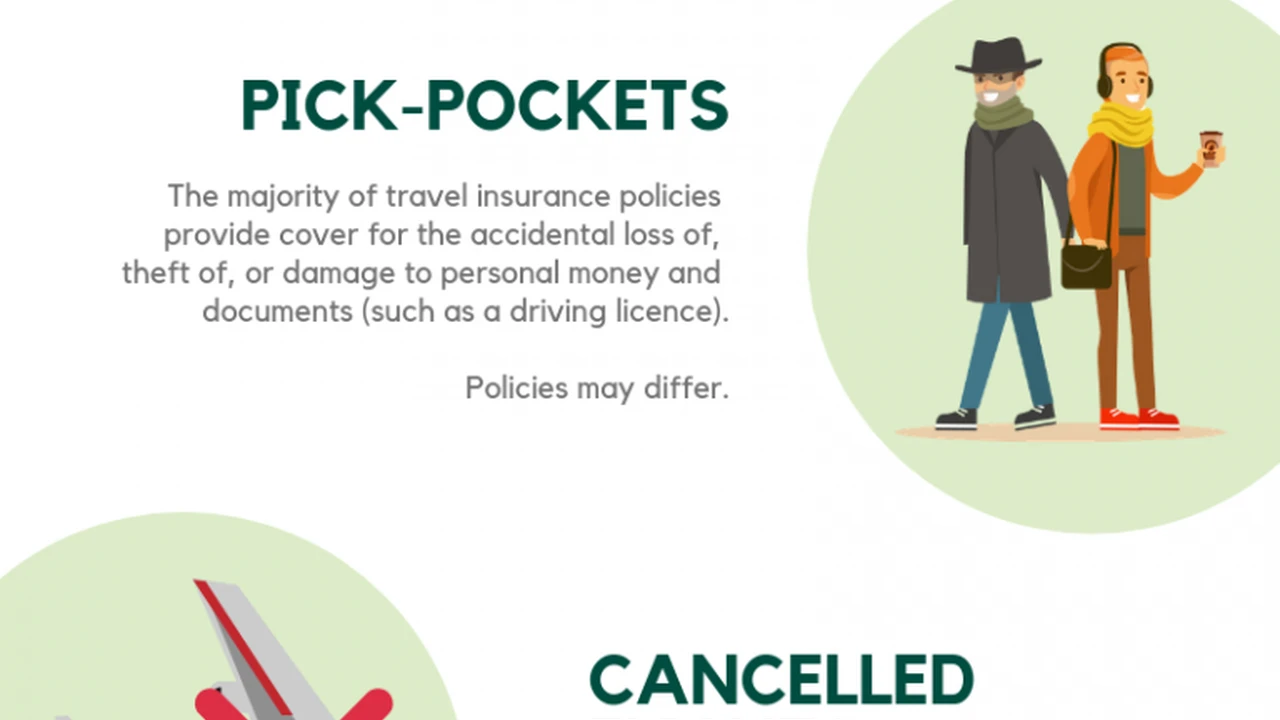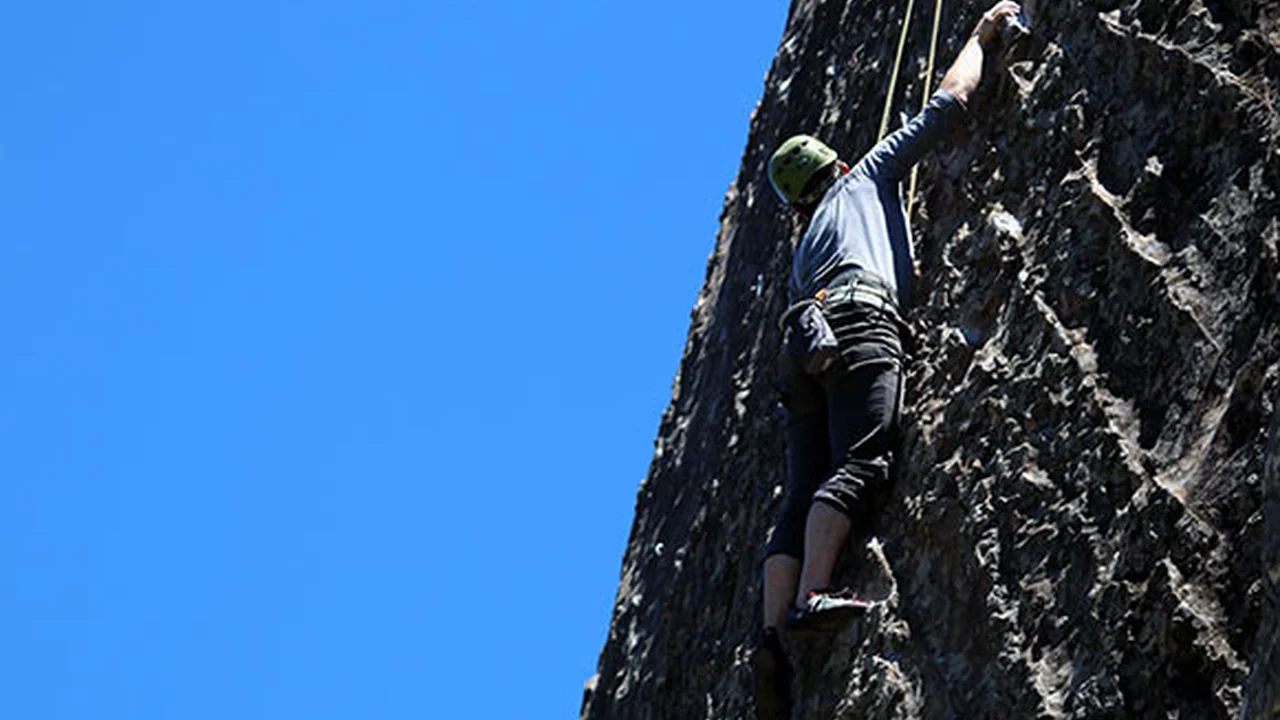High-Risk Insurance vs. Standard Travel Insurance: Key Differences

High-risk activity insurance vs standard travel insurance key differences Is standard travel insurance enough for high-risk activities We highlight the crucial differences Ensure you have adequate coverage for your chosen pursuits
Understanding Standard Travel Insurance
Standard travel insurance is designed for the average traveler, covering common travel mishaps such as trip cancellations, lost luggage, and basic medical emergencies. It's a safety net for unforeseen circumstances that can disrupt your vacation. Think of it as your everyday, all-purpose travel companion.
What Standard Travel Insurance Typically Covers
- Trip Cancellation/Interruption: Reimburses you for non-refundable expenses if you have to cancel or cut short your trip due to covered reasons like illness, injury, or family emergencies.
- Lost or Delayed Luggage: Provides compensation if your luggage is lost, stolen, or delayed.
- Medical Expenses: Covers medical treatment if you get sick or injured while traveling.
- Emergency Evacuation: Helps with the costs of emergency medical transportation to a suitable medical facility.
Limitations of Standard Travel Insurance
While standard travel insurance offers valuable protection, it often falls short when it comes to high-risk activities. Many policies exclude coverage for activities deemed dangerous or adventurous. This is where high-risk activity insurance comes into play.
Delving into High-Risk Activity Insurance
High-risk activity insurance is specifically designed to cover activities that standard travel insurance typically excludes. It provides a broader range of coverage tailored to the unique risks associated with adventurous pursuits. This type of insurance acknowledges that adrenaline-fueled activities come with a higher chance of injury or requiring specialized medical care.
What High-Risk Activity Insurance Typically Covers
- Activities Coverage: Covers a wide range of high-risk activities like skydiving, scuba diving, rock climbing, mountaineering, skiing, snowboarding, and more.
- Search and Rescue: Provides coverage for search and rescue operations, which can be crucial in remote or challenging environments.
- Specialized Medical Treatment: Covers specialized medical treatment for injuries sustained during high-risk activities, such as hyperbaric chamber treatment for diving-related illnesses.
- Equipment Coverage: Offers protection for specialized equipment like diving gear, climbing equipment, or ski equipment against damage or loss.
Why You Need High-Risk Activity Insurance
If you're planning to engage in any activity that pushes the boundaries of the ordinary, high-risk activity insurance is a must. It provides peace of mind knowing that you're covered for the unexpected, allowing you to focus on enjoying your adventure.
Key Differences Between Standard and High-Risk Insurance A Detailed Comparison
Let's break down the key differences between standard and high-risk insurance to help you determine which type is right for you.
Activity Coverage: The Main Differentiator
This is the most significant difference. Standard travel insurance typically excludes high-risk activities, while high-risk activity insurance specifically covers them. If you plan to do anything beyond leisurely sightseeing, high-risk coverage is essential.
Medical Coverage: Scope and Depth
While both types of insurance offer medical coverage, high-risk activity insurance often provides more comprehensive coverage for injuries sustained during adventurous pursuits. This may include coverage for specialized treatments, such as hyperbaric chamber therapy for divers or helicopter rescue for climbers.
Search and Rescue Coverage: A Lifesaver
Search and rescue operations can be incredibly expensive, especially in remote locations. Standard travel insurance rarely covers these costs, while high-risk activity insurance often includes coverage for search and rescue, providing a crucial safety net.
Equipment Coverage: Protecting Your Gear
Specialized equipment for activities like diving, climbing, and skiing can be costly. High-risk activity insurance often offers coverage for damage or loss of this equipment, while standard travel insurance typically only covers personal belongings.
Cost: Weighing the Investment
High-risk activity insurance is generally more expensive than standard travel insurance due to the increased risk involved. However, the added protection and peace of mind are well worth the investment if you plan to engage in adventurous activities.
Real-World Scenarios: When You Need High-Risk Coverage
Let's look at some real-world scenarios to illustrate the importance of high-risk activity insurance.
Scenario 1: The Skiing Accident
Imagine you're skiing in Aspen, Colorado, and you have a bad fall, breaking your leg. Standard travel insurance might cover the initial medical treatment, but it might not cover the cost of a helicopter evacuation from the mountain or specialized rehabilitation. High-risk activity insurance designed for skiers would cover these costs, ensuring you receive the necessary care without financial burden.
Scenario 2: The Diving Mishap
You're scuba diving in the Great Barrier Reef when you experience decompression sickness. Standard travel insurance may cover basic medical expenses, but it may not cover the cost of hyperbaric chamber treatment, which can be extremely expensive. Dive insurance, a form of high-risk activity insurance, would cover this specialized treatment, potentially saving you thousands of dollars.
Scenario 3: The Climbing Expedition
You're rock climbing in Yosemite National Park when you fall and require a rescue team to extract you from a remote area. Standard travel insurance likely wouldn't cover the cost of the rescue operation. Climbing insurance, a type of high-risk activity insurance, would cover these costs, which can easily reach tens of thousands of dollars.
Product Recommendations: High-Risk Insurance Providers
Choosing the right high-risk insurance provider is crucial. Here are a few recommended options, along with their features, pricing, and ideal use cases.
1. World Nomads Explorer Plan Best Overall for Adventurous Travelers
Features:
- Covers a wide range of high-risk activities, including skiing, diving, climbing, and more.
- Offers coverage for medical expenses, emergency evacuation, and trip cancellation/interruption.
- Provides 24/7 emergency assistance.
- Allows you to purchase or extend your policy while traveling.
Use Case: Ideal for travelers who engage in a variety of high-risk activities and want comprehensive coverage.
Pricing: Varies depending on your age, destination, and trip duration. A 14-day trip to Europe for a 30-year-old could cost around $200-$300.
2. DAN (Divers Alert Network) Best for Scuba Divers
Features:
- Specialized coverage for scuba diving-related accidents and illnesses.
- Covers hyperbaric chamber treatment, medical evacuation, and search and rescue.
- Offers liability coverage for dive professionals.
Use Case: Specifically designed for scuba divers and freedivers, providing comprehensive coverage for diving-related emergencies.
Pricing: Annual membership plans range from $35 to $100, depending on the level of coverage.
3. Global Rescue Best for Remote and Extreme Adventures
Features:
- Provides medical and security evacuation services from remote and challenging locations.
- Offers 24/7 medical and security advisory services.
- Covers search and rescue operations.
Use Case: Best suited for travelers embarking on expeditions to remote areas or engaging in extreme sports.
Pricing: Membership plans start around $329 per year.
4. IMG Signature Travel Insurance Best for Customization
Features:
- Allows you to add riders for adventure sports.
- Covers trip cancellation, medical expenses, and lost luggage.
- Offers optional riders for adventure sports, pre-existing conditions, and more.
Use Case: Good for people who want a standard travel insurance plan but need to add specific adventure sports coverage.
Pricing: Base plans start around $50-$100 for a week, with add-ons increasing the price.
Comparing Products: A Detailed Look
Let's compare these products based on key features and use cases.
Activity Coverage Comparison
- World Nomads: Broad coverage for many activities.
- DAN: Specialized for diving.
- Global Rescue: Focus on evacuation, less on activity coverage.
- IMG: Customizable, so activity coverage depends on the rider.
Price Comparison
- DAN: Most affordable if you only dive.
- World Nomads: Mid-range, good value for broad coverage.
- IMG: Price depends on add-ons, can be affordable or expensive.
- Global Rescue: Most expensive, for specific evacuation needs.
Medical Evacuation Comparison
- World Nomads: Covered, but depends on the plan.
- DAN: Covered for diving-related incidents.
- Global Rescue: Primary focus is evacuation.
- IMG: Covered, but depends on the plan.
Choosing the Right Policy: Factors to Consider
Selecting the right high-risk activity insurance policy depends on several factors.
Your Activities
Consider the specific activities you plan to engage in. If you're a diver, DAN might be the best choice. If you're a multi-sport enthusiast, World Nomads could be a better fit.
Your Destination
Think about the location of your trip. If you're traveling to a remote area, Global Rescue's evacuation services could be invaluable.
Your Budget
Determine how much you're willing to spend on insurance. DAN is the most affordable option for divers, while Global Rescue is the most expensive.
Your Risk Tolerance
Assess your risk tolerance. If you're comfortable with a basic level of coverage, a standard travel insurance policy with add-ons might suffice. If you want comprehensive protection, a dedicated high-risk activity insurance policy is the way to go.
Making an Informed Decision: Research and Reviews
Before purchasing any insurance policy, it's essential to do your research. Read reviews, compare policies, and talk to insurance providers to ensure you're getting the right coverage for your needs. Don't be afraid to ask questions and clarify any doubts you may have.
Final Thoughts: Protecting Your Adventure
High-risk activity insurance is a crucial investment for anyone planning to engage in adventurous pursuits. It provides peace of mind knowing that you're covered for the unexpected, allowing you to focus on enjoying your adventure to the fullest. By understanding the differences between standard and high-risk insurance, considering your specific needs, and researching your options, you can choose the right policy and protect yourself from financial risks.
:max_bytes(150000):strip_icc()/277019-baked-pork-chops-with-cream-of-mushroom-soup-DDMFS-beauty-4x3-BG-7505-5762b731cf30447d9cbbbbbf387beafa.jpg)






